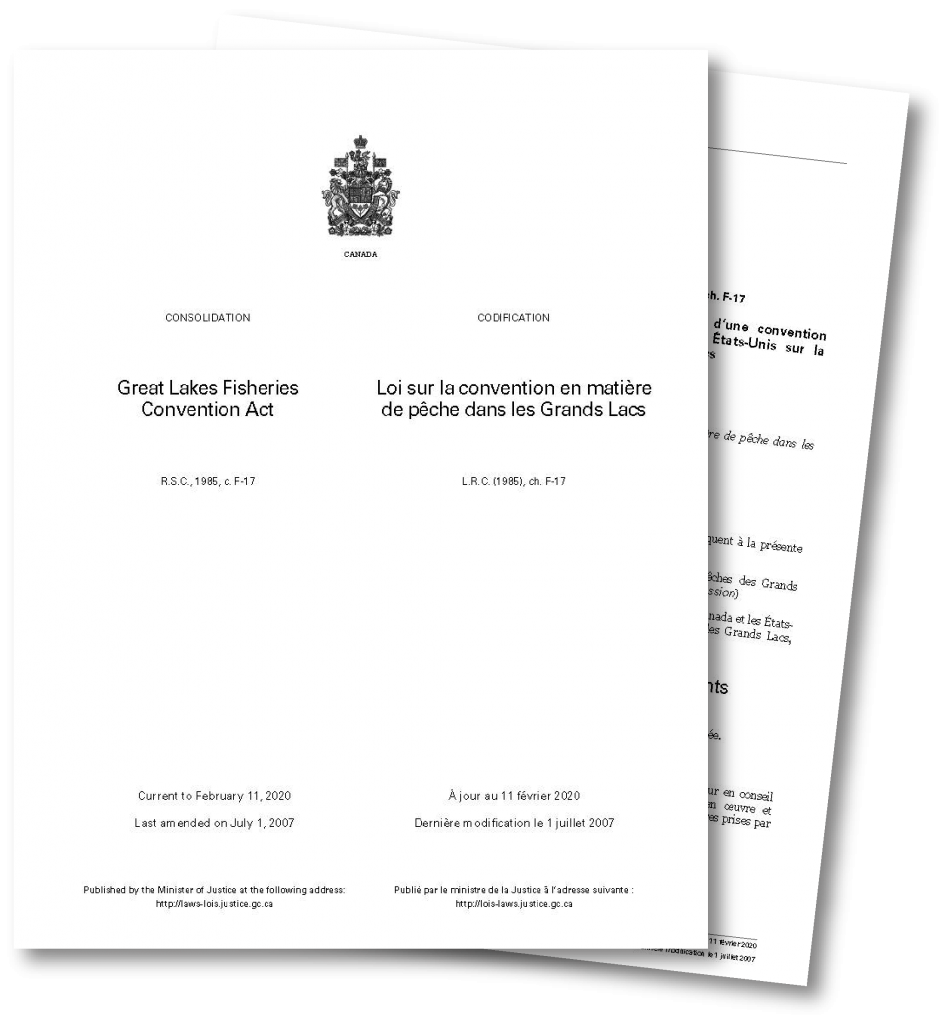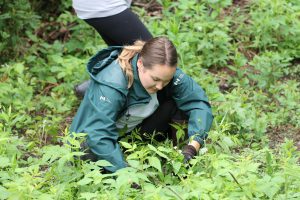Learn about invasive species
Invasive species are considered one of Canada’s greatest threats to the survival of our wild animal and plant life. These species arrive, often accidentally, and establish in the absence of natural predators. As a result, invasive species kill, crowd out, and devastate native species and their ecosystems.
Invasive plants and animals not only threaten wildlife, woodlands, and waterways, but they also cost Canada billions of dollars in losses to forestry, agriculture, fisheries, and other industries affected by their impact.

Invasive species have no boundaries
Invasive species are plants, animals, insects, and pathogens that are introduced to an area and cause harm to the environment, economy, or society. Non-native species aren’t automatically considered invasive species just because they come from a different area of the world – they must also cause negative environmental, economic, or social impacts:
Environmental Impacts
Invasive species compete with native species for resources like space, light, water, and food. They can also directly prey on native species (in the case of invasive species like wild pigs or northern giant hornets) or carry diseases and parasites that can spread to native species. Through these activities, invasive species reduce biodiversity (the diversity of living species in an ecosystem) and can put native species at risk.
Species at risk and other native species that rely on these habitats for survival. The loss of native species, such as certain plant and tree species, can also decrease shade for forest floor plants, reduce nutrient resources for microscopic organisms, and have cascading effects in terrestrial and aquatic ecosystems. Ecosystem services are positive benefits provided to society by ecosystems (e.g. clean air provided by forests, flood and erosion control in wetlands). These services can be significantly impacted by the loss of native species and alteration of habitat.
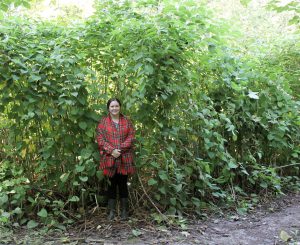
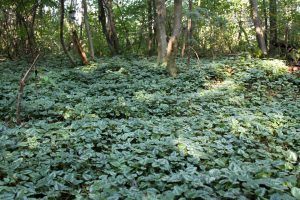
Photos: Forest ecosystems overrun by Japanese knotweed (top) and yellow archangel (bottom).
Economic Impacts
A recent study found that municipalities and conservation authorities are estimated to spend $50.8 million per year on invasive species management in Ontario alone. Across Canada, economic costs associated with invasive species can include management (mechanical, chemical, and biological), research and monitoring programs, reduced crop yield, job losses (such as in the case of reduced forestry production), damage to infrastructure, and impacts to international trade and tariffs.
Additional economic losses caused by invasive species can include loss of ecosystem services (i.e. increasing flooding, reducing resiliency to climate change), impacts to tourism and recreation, and reduced property values (such as cottage properties overrun by zebra mussels or city lots with trees affected by emerald ash borer).
Economic costs of invasive species are much lower when funds are allocated to prevention and early detection efforts. Once an invasive species spreads, management is exponentially more expensive and less efficient.
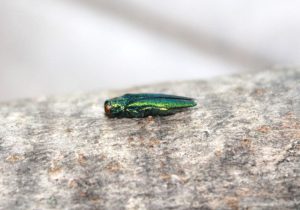
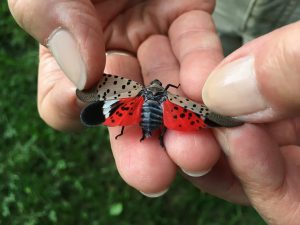
Photos: The ISC’s 2019 Economic Impacts Study estimated that Ontario municipalities spend over $22 million annually on emerald ash borer management (top). Spotted lanternfly, not found in Canada, is a looming threat to Ontario’s billion-dollar fruit and wine industries (bottom).
Social Impacts
Many of Canada’s beloved pastimes are at risk due to invasive species. They threaten recreational spaces and compromise outdoor activities such as hiking, swimming, fishing, boating, and visiting local parks. Examples include beaches covered in zebra mussels that can cut the feet of beach goers, waterfront taken over by invasive aquatic plants such as Phragmites and hydrilla, loss of trees in local parks due to invasive pests or pathogens, and reduced fishing opportunities resulting from species loss related to competition with/habitat alteration by aquatic invasive species.
Invasive species cause direct and indirect impacts to human health. Direct risks include contact with species such as giant hogweed, wild parsnip, and Northern giant hornet. Indirect impacts to human health include reduced outdoor opportunities, which are proven to be beneficial for mental health and well-being.
Invasive species pose significant threats to different cultures in Canada. Asian longhorned beetle is a threat to Canadian maples, an important piece of Canadian cultural identity for many. Invasive species can also impact Indigenous communities by reducing the availability of culturally-important species, such as the loss of American ginseng (impacted by garlic mustard) as a component of traditional medicine, or the loss of ash trees (impacted by emerald ash borer) as an important source of material for traditional activities like basket-making.
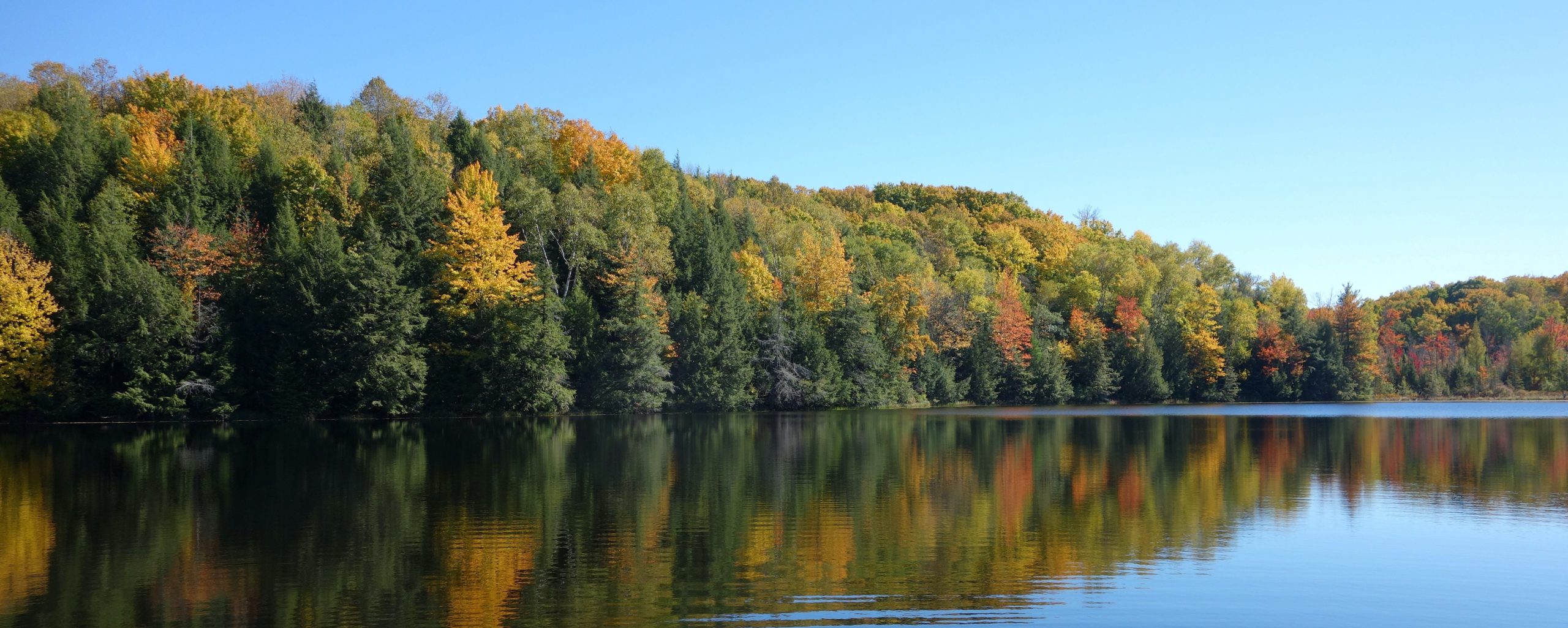
Together, we can prevent the spread of invasive species and protect Canada’s environment, economy, and social well-being. Browse the resources available on this website to learn how to prevent the spread of invasive species and identify and report any invasive species you see!
What Makes A Species Invasive?
Thousands of years of co-evolution and adaptation by native species in a competition for resources creates this perfect balance, where each species occupies its own unique niche within the environment.
A species is considered ‘exotic’ when it is introduced into an ecosystem outside of its native range. Exotic species can arrive into Canada through a number of pathways, such as hitchhiking on travelers’ luggage, movement of infested wood products (firewood, shipping crates), or through natural dispersal. Many exotic species introductions have very little impact on our native environments, and often disappear as soon as they arrive, or establish themselves within the new ecosystem without disturbing the local balance.
However, every so often a species is introduced into a new environment where the conditions are favourable for establishment, and the exotic species becomes invasive.
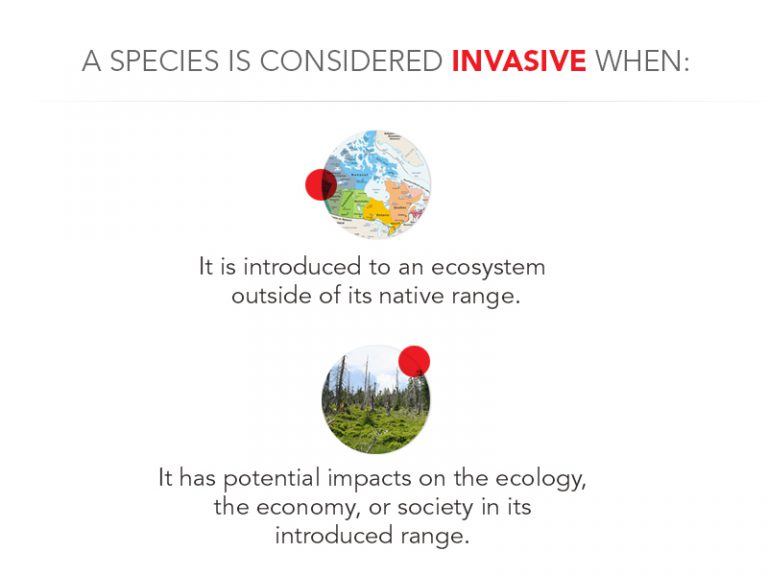
In order for a species to become invasive, it must possess the ability to outcompete and overwhelm native species in its introduced range. There are a number of traits characteristic to invasive species to facilitate this ecological advantage.
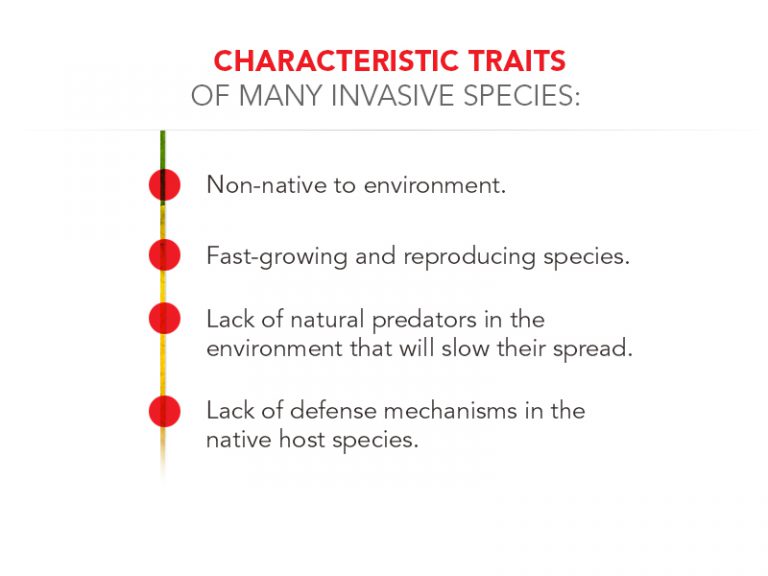
If an invasive species is undetected and unregulated, it can become established in the environment, and spread uncontrollably across the landscape. Introductions like this can cause immeasurable impacts to our economy, ecology, and social values. Invasive species introductions are commonly regarded as the second greatest threat to global biodiversity, next to habitat loss
Invasive species can:
- Cause irreversible damage to the environment and reduce critical habitat
- Reduce biodiversity by outcompeting native species
- Require a significant amount of money for prevention and management
- Negatively impact global trade, the economy, industry, and job opportunities
- Directly affect human health and community wellbeing
- Cause economic and social impacts to communities
- Reduce recreational spaces and compromise outdoor experiences


